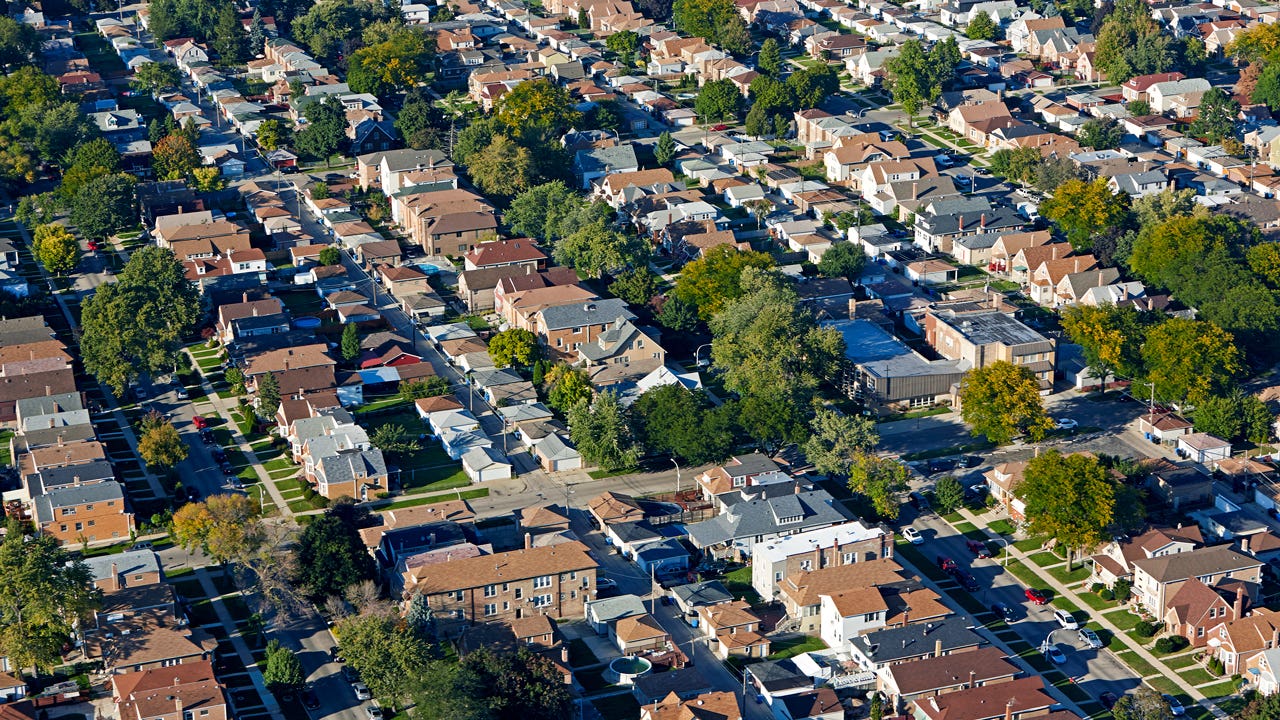Section 8 housing facts and statistics

Section 8 housing is a government-sponsored program that provides subsidized rental units to low-income individuals and families, seniors and disabled individuals across the United States. The name is derived from Section 8 of the United States Housing Act of 1937, which authorized housing assistance for low-income Americans, and access to safe and sanitary rental properties.
Today, Section 8 housing is formally known as the Housing Choice Voucher Program. Individuals and families who are eligible for the program receive a Housing Choice Voucher and are able to have a large portion of their rent paid for by the federal government. Section 8 housing is different from public housing—those who qualify for Section 8 are able to rent any property that is authorized by their local public housing agency (PHA).
Section 8 housing statistics
Millions of Americans participate in the Section 8 housing program. Here are some statistics about Section 8 housing and the demographics that utilize the program:
- Applicants who earn 30% of the median income in their area are given preference based on their household need.
- More than 80% of households under Section 8 subsidized housing earn less than $20,000 per year.
- Out of the 4.8 million households receiving housing assistance, 2.1 million households receive housing vouchers.
- 3 million households rent residences in Section 8.
- Families stay in the section 8 program for an average of six years.
- Most eligible households only consist of two members, on average.
- 43% of families in section 8 housing are families with children. 42% of these families with children have a female head of household.
- 43% of households that participate in Section 8 have at least one disabled family member.
- While there are millions of Americans already receiving housing benefits, hundreds of thousands are on a waiting list to receive aid.
Section 8 housing options
Although Section 8 housing is federally-funded, the program is administered by local PHAs. These agencies collect and process Section 8 housing applications and oversee the placement of participants. In addition, PHAs are responsible for setting the eligibility requirements for Section 8 housing in each state.
There are PHAs in all 50 states, and depending on the state’s population and demand for affordable housing, there may be more than one agency in each area. If you want to apply for Section 8 housing, you’ll need to find your local PHA using the free search tool on the U.S. Department of Housing and Urban Development (HUD) website.
One of the biggest benefits of Section 8 housing is that participants are able to rent any property that is approved by the local PHA. Families and individuals who get subsidized housing under Section 8 are not confined to public housing that is owned by the government. Some common options for Section 8 housing include:
- Apartments
- Single-family homes
- Condos
- Multi-family apartment buildings
- Group homes
- Mobile homes
- Single rooms in a house or apartment building
In order for a property to be rented under Section 8, the landlord or building owner must maintain the property as they would for any other tenant. PHAs require an inspection of all rental units before a tenant or family is able to move in. This ensures that the landlord complies with the PHA’s requirements for Section 8 rentals, including that properties be safe and sanitary.
Rent-to-own housing assistance
Through the Section 8 Housing Choice Voucher Program, certain low-income individuals can qualify for rent-to-own housing assistance. Rather than using a voucher to get rental housing, participants can use their voucher to purchase a home and receive aid for certain monthly expenses, including a mortgage.
However, not every PHA offers a rent-to-own assistance program, so potential applicants will need to check with their local PHA to see if this program is available. In addition, participants must meet specific eligibility requirements, some of which may include:
- Must be a first-time homeowner (or have not owned a home in at least three years).
- At least one person in the household must be employed full-time.
- Must have a minimum amount of money in a savings account.
- Must attend and complete a pre-assistance homeownership course.
- Must attend and complete a housing counseling program.
If you intend to purchase a home through the rent-to-own housing assistance program, getting homeowners insurance is important. Home insurance protects the structure of your home and your personal belongings. It also typically covers liability, medical payments and additional living expenses. Participants who buy a home through the rent-to-own program can usually use their voucher to cover their monthly homeowners insurance premium.
Know your rights
Individuals and families who qualify for federal housing assistance through Section 8 are protected under federal laws and thus guaranteed certain rights. During the Civil Rights Era, the Fair Housing Act of 1968 was passed, which aimed to eliminate housing discrimination based on race, religion, gender, disability and ethnicity.
Although the Fair Housing Act protects low-income renters in the Section 8 program, housing discrimination still exists. Here are some common examples of housing discrimination that are illegal under the Fair Housing Act:
- Creating rules around housing with children.
- Not providing accessibility accommodations for disabled individuals.
- Denying a tenant’s application due to their race or religion.
- Attempting to place tenants into neighborhoods of a dominant race or religion.
In addition to federal housing discrimination laws, Section 8 tenants have their own unique rights, which differ slightly depending on the state. For example, tenants have the right to:
- Live in safe, sanitary and decent housing.
- Use common spaces for any reason, including to organize with other tenants.
- Have their unit repaired in a timely manner when necessary.
- Be given reasonable notice in writing if a landlord needs to enter their unit for any reason.
- File a complaint with HUD if their landlord violates Section 8 rules.
- Receive equal access to the building’s amenities and facilities.
- Receive official notice from HUD of rent increases, construction or renovations, reduction in resident utility allowance and other issues that directly affect the tenant.
The Section 8 housing application can be found on your state’s PHA website. You will also find information about Section 8 eligibility. Here’s a quick overview of how to apply for Section 8 housing under the Housing Choice Voucher Program:
- Find your local PHA using HUD’S free finder tool.
- Check the PHA’s website for an online application (you may need to call or email the PHA to receive a copy of the application).
- Make sure you meet your PHA’s eligibility requirements for Section 8.
- Complete the application and return it to your local PHA.
- Once your application is approved, you can start searching for housing in your area.
Frequently asked questions about Section 8
Here are some of the most commonly asked questions and answers about the program:
-
-
Section 8 housing, which is formally known as the Housing Choice Voucher Program, offers subsidized rental housing to low-income families, elderly people, individuals with disabilities or anyone who needs access to safe and sanitary housing. The Section 8 housing program is funded by HUD and is managed by local PHAs across all 50 states.
-
Every state has slightly different eligibility requirements for Section 8 housing. In general, you must be at least 18 years old and be a U.S. citizen or eligible non-citizen. You must also meet certain income requirements. Many PHAs require participants to have a rental history with no evictions and positive referrals from past landlords.In addition, some applicants who meet the basic requirements but have more critical needs are given preference. People who are homeless, spend more than half their income on rent, are involuntarily displaced or are victims of domestic violence may be more likely to get approved for a Section 8 voucher.
-
A Section 8 housing voucher will pay for some or all of your monthly rental payment. The exact amount that is covered will depend on the Fair Market Rent in the area, the payment standards created by the PHA and the size of the unit to be rented. In general, tenants must spend at least 30% of their monthly adjusted income or 10% of their monthly gross income on rent. Their voucher will cover the remaining portion. Tenants with the greatest financial need typically get the largest subsidies.
-
When someone applies for Section 8 housing, they are often placed on a waiting list. Depending on the person’s living situation and level of need, they can be moved up on the waiting list. However, Section 8 waiting lists can be very long. If the wait time is longer than one year, most PHAs will stop accepting new applications until there is room on the waiting list. Prospective Section 8 housing tenants can apply for housing from more than one PHA in their area, which may speed up the process.
-
For most people, there is no time limit for how long you can participate in the Section 8 housing program. As long as you continue to meet your local PHA’s Section 8 eligibility requirements, you can continue to receive vouchers and have your rent subsidized. However, keep in mind that you will need to report any changes to your income or family size, which could potentially change the amount you are required to pay on a monthly basis.
-
Yes, if you need affordable housing quickly, you may be able to qualify for emergency Section 8 housing. Emergency Housing Vouchers (EHVs) are available through the American Rescue Plan Act (ARPA), and can provide emergency housing for people who are homeless, attempting to flee from unsafe living conditions, or are victims of domestic violence, dating violence, stalking, human trafficking or sexual assault. These EHVs are available through local PHAs, but there is typically a limited number allotted per agency.
-
Resources
Families and individuals who have questions about Section 8 housing, including who qualifies and how to apply, can take advantage of a variety of online resources. Here are some of the best Section 8 housing resources you might find helpful:
- Housing Choice Vouchers Fact Sheet: This fact sheet from HUD provides common questions and answers about Section 8 housing. You can learn more about how vouchers work, who is eligible for the program, roles of the tenant and landlord, and how subsidies are calculated.
- Section 8 Housing Statistics: This Section 8 guide highlights some key statistics around the program. You can learn more about the demographics of the program, as well as how much the average tenant spends on housing.
- About the Section 8 Waiting List: After applying for Section 8 housing, most people are placed on a waiting list. This resource explains how the waitlist works, priority cases, the Section 8 lottery and how to check your place on the waitlist.
- How Does Section 8 Work?: This guide provides a high level overview of what Section 8 is and how you can apply for a voucher. It also includes detailed information on eligibility for the program and income limits.
- Section 8 Tenant Rights: As mentioned, tenants who live in Section 8 housing have rights in place designed to protect them. This resource outlines tenant rights, and explains landlord obligations for maintaining an approved Section 8 property.
Bottom line
Individuals and families who are unable to afford housing in the current housing market might want to consider applying for Section 8 housing if they meet the eligibility criteria. Not only does the Section 8 housing program offer clean and safe rental properties, but individuals are able to choose where they live based on their needs and the size of their family. Participants who are looking to purchase a house can also take advantage of the rent-to-own program, depending on their location.
To avoid spending many months on the waitlist, participants are encouraged to apply for housing through multiple PHAs in their area, if possible. Once an applicant is approved for a voucher, they can typically stay in Section 8 housing if they continue to meet the requirements around income, family size and tenant responsibilities.
You may also like

New York housing market: Everything you need to know

U.S. mortgage statistics and FAQ

Jacksonville, FL housing market: Everything you need to know



